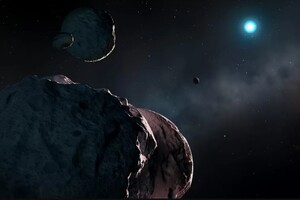It is only 90 light years away from us.

Scientists managed to find the oldest known dead star, which in the past was surrounded by rocky planets. It is located at a distance of 90 light years from Earth, according to Space.com. The discovery may help scientists better understand the composition of the worlds that formed about 11 billion years ago.
A star is a so-called white dwarf – a “corpse” left after the star has run out of hydrogen fuel. It was an ordinary star born 10.7 billion years ago, three billion years after the Big Bang. The object, designated WDJ2147-4035, is one of two white dwarfs contaminated by planetary clouds that were recently discovered by the Gaia observatory.
Also read: Scientists have discovered an ocean planet near Earth
These are not the first dwarfs that have preserved evidence of the existence of planets. But they are the oldest known and provide insight into the composition of planets that formed three billion years after the Big Bang.
The progenitor star WDJ2147-4035 was more massive than the Sun, but not massive enough to end its life explode supernova. Just 500 million years after birth, the star ran out of hydrogen fuel, swelled up into a red giant, and then shed its outer shells. As a result, a bare core remained – a white dwarf.
As it turned into a red giant, the gravitational fields changed, so some of the planets that surrounded the star were either destroyed or destroyed. Some, apparently, remained intact. But these disturbances led to the fact that a large amount of planetary debris fell on the white dwarf.
Astronomers from the University of Warwick analyzed the spectrum of the star's light, which indicated an amazing variety of planets. Thus, WDJ1922+0233 acquired a blue hue, which indicated an unusual mixing of gases in the helium-hydrogen atmosphere, probably contaminated with material similar in composition to the composition of the Earth's continental crust.
The red color in the spectrum is more difficult to explain. It appears due to the presence of lithium, potassium, sodium and carbon falling on the white dwarf. According to scientists, this means that the debris of the planets was rich in lithium and sodium, which distinguishes them from all known planets of the Solar System.
Related video
Previously, astronomers managed to discover three previously unknown potentially dangerous asteroids< /strong>. And one of them is the largest similar celestial body discovered in the last eight years.




